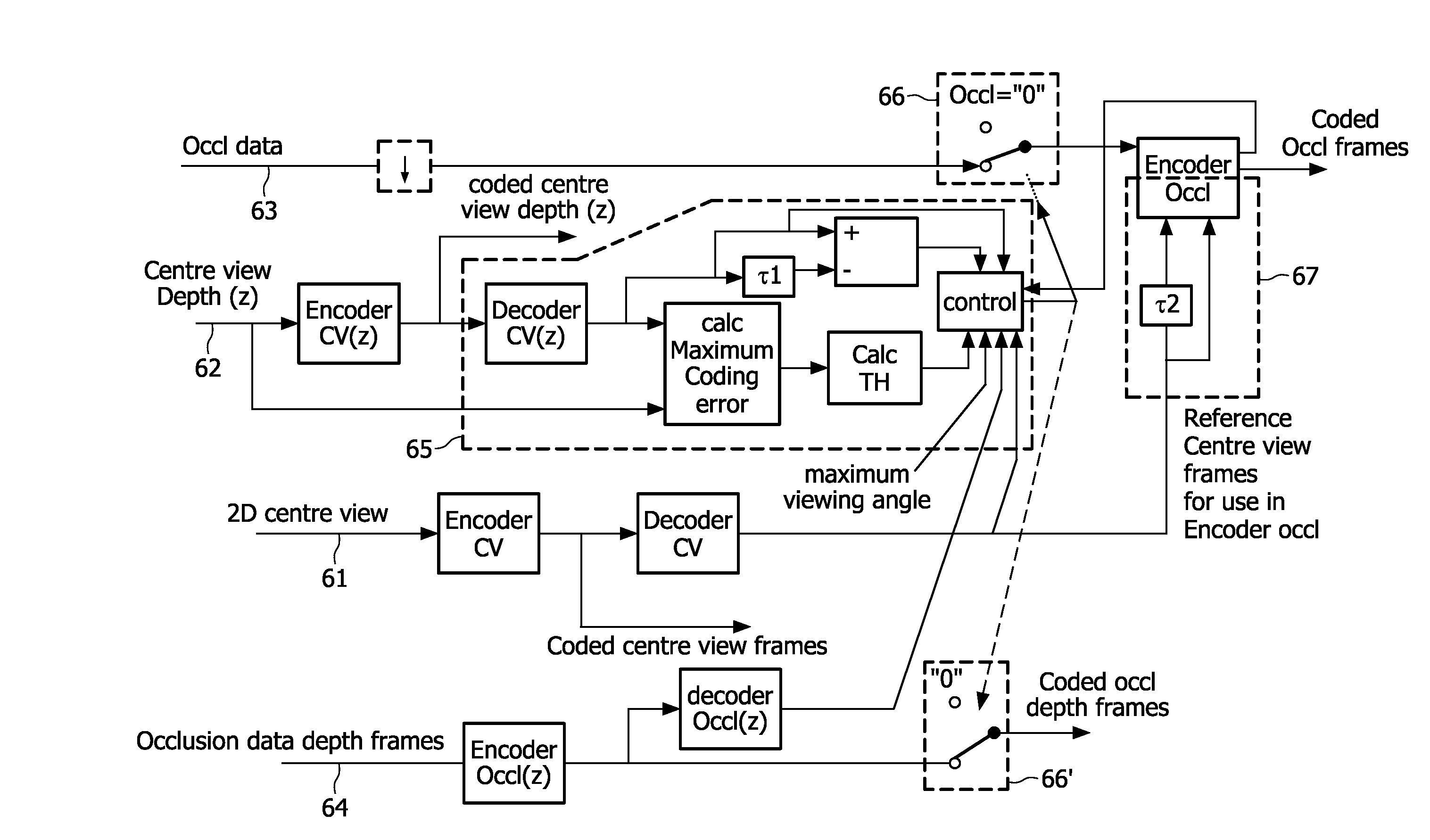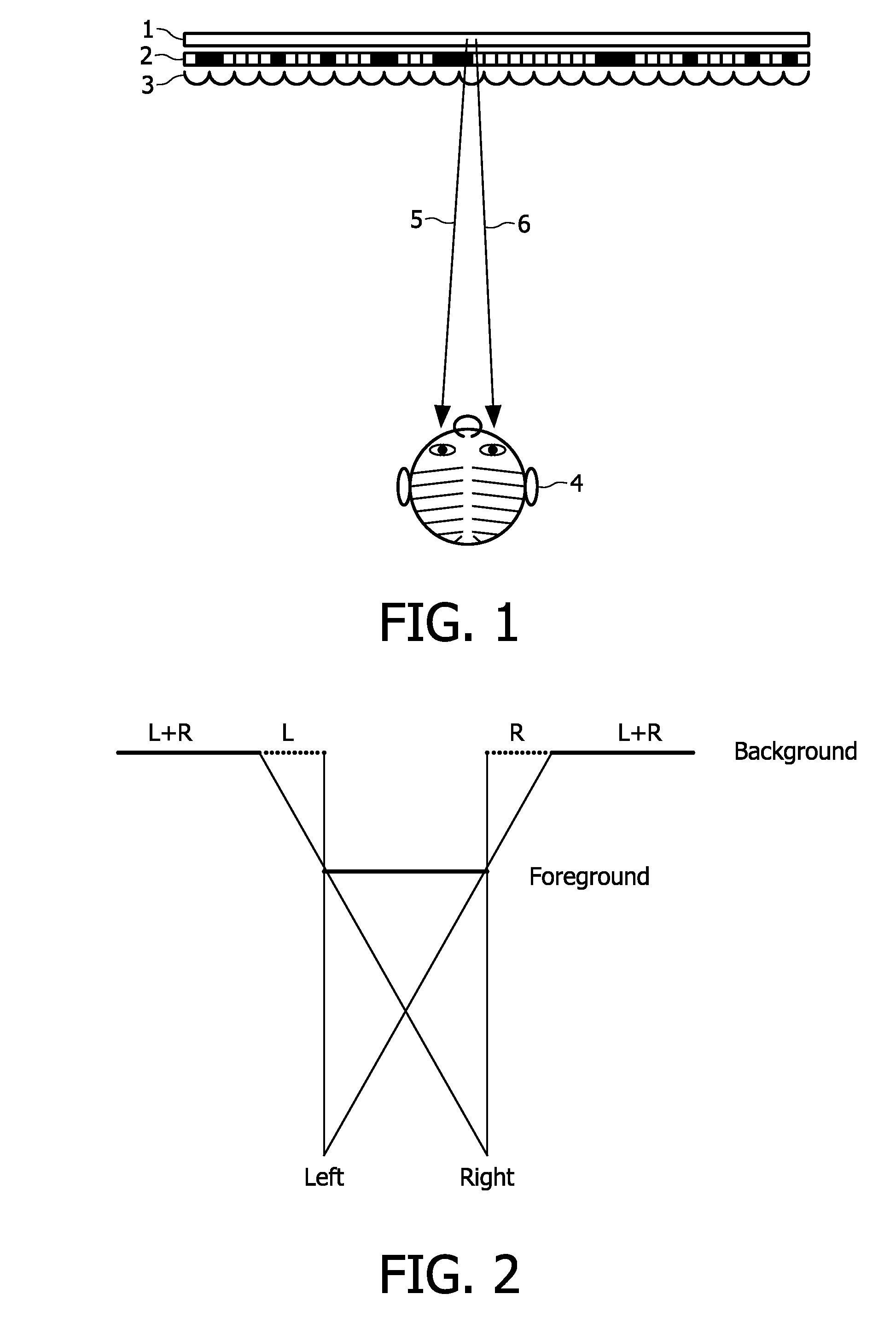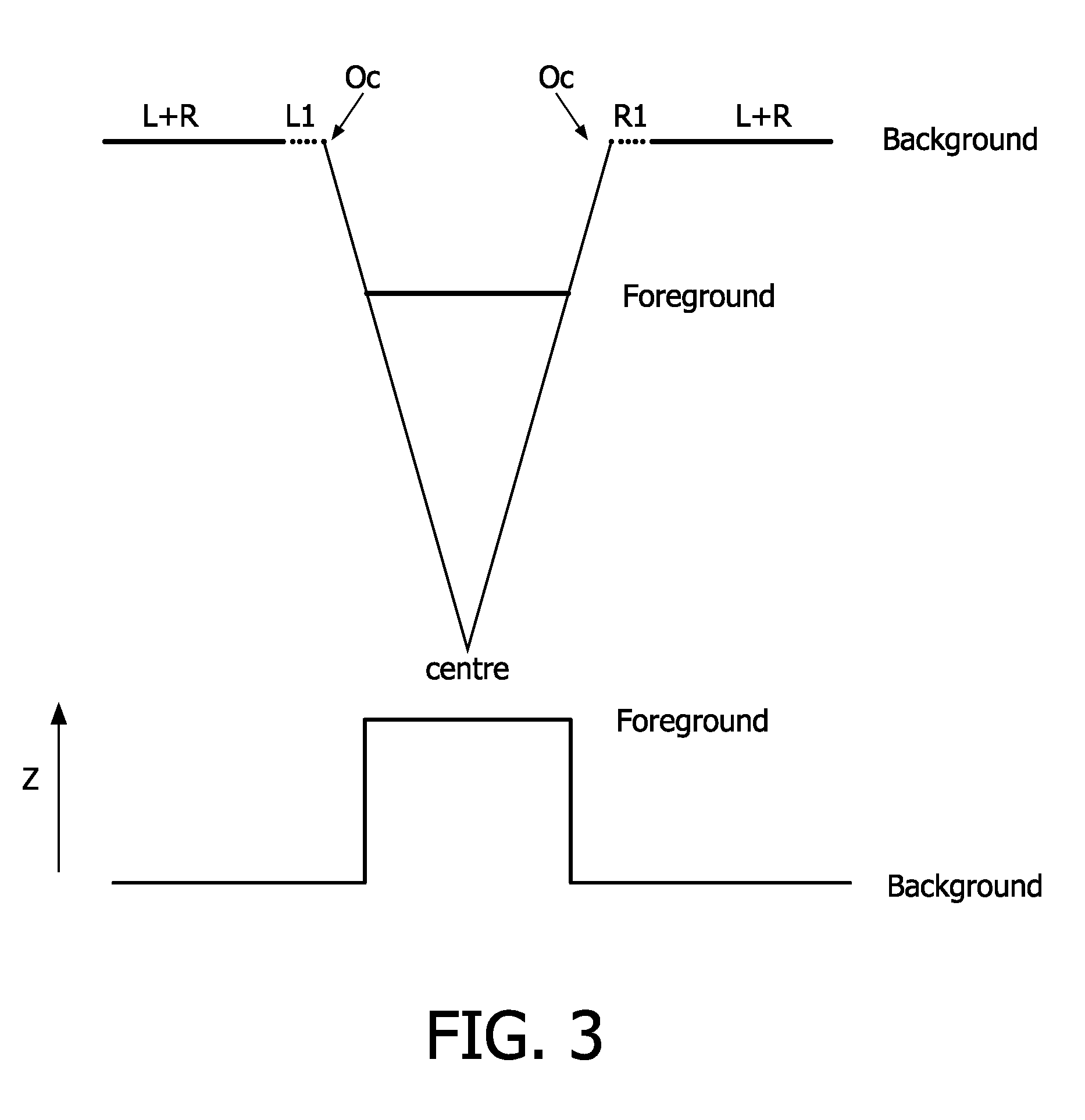Method and system for encoding a 3D video signal, enclosed 3D video signal, method and system for decoder for a 3D video signal
a technology of video signal and encoder, applied in the field of video encoding and decoding, to achieve the effect of improving 3d image quality, reducing the amount of data to be transmitted, and improving depth maps
- Summary
- Abstract
- Description
- Claims
- Application Information
AI Technical Summary
Benefits of technology
Problems solved by technology
Method used
Image
Examples
Embodiment Construction
[0068]FIG. 1 illustrates the basic principle of a type of auto-stereoscopic display device. The display device comprises a lenticular screen splitting 3 for forming two stereo images 5 and 6. The vertical lines of two stereo images are (spatially) alternatingly displayed on, e.g., a spatial light modulator 2 (e.g. a LCD) with a backlight 1. Together the back light and the spatial light modulator form a pixel array. The lens structure of the lenticular screen 3 directs the stereo image to the appropriate eye of the viewer.
[0069]In FIGS. 2 and 3 the occlusion problem is illustrated. The line indicated with Background in this figure is the background and the line indicated with Foreground represents an object that is located in front of the background. Left and Right represent two views of this scene. These two views can be, for example, the left and the right view for a stereo set-up, or the two most outer views for the case of usage of an n-view display. The remaining n−2 views, requ...
PUM
 Login to View More
Login to View More Abstract
Description
Claims
Application Information
 Login to View More
Login to View More - R&D
- Intellectual Property
- Life Sciences
- Materials
- Tech Scout
- Unparalleled Data Quality
- Higher Quality Content
- 60% Fewer Hallucinations
Browse by: Latest US Patents, China's latest patents, Technical Efficacy Thesaurus, Application Domain, Technology Topic, Popular Technical Reports.
© 2025 PatSnap. All rights reserved.Legal|Privacy policy|Modern Slavery Act Transparency Statement|Sitemap|About US| Contact US: help@patsnap.com



